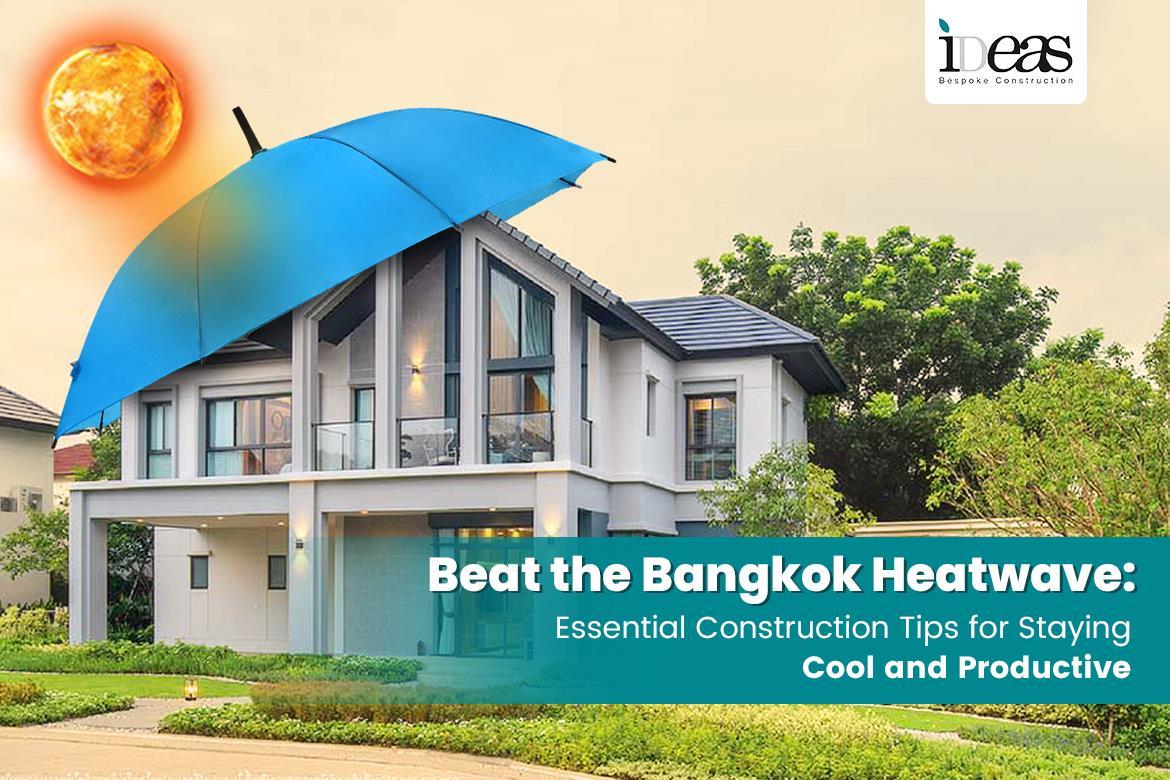Beat the Bangkok Heatwave: Essential Construction
Tips for Staying Cool and Productive

Working in Bangkok’s heat can be brutal, especially for construction workers. Heatwaves pose risks like heatstroke, exhaustion, and reduced productivity. But with the right preparation, you can keep your construction crew safe, comfortable, and on schedule.
Hydration is Key
o Encourage frequent water breaks, especially in the hottest part of the day. A good rule of thumb is to take a short water break every 1520 minutes, or more often if workers are engaged in strenuous activity or perspiring heavily. Set up water stations in shaded areas that are easily accessible to all workers. Ensure the water is cool and refreshing, not lukewarm. Consider investing in insulated coolers to keep the water chilled throughout the day.
o Offer electrolyte-rich drinks, such as commercially prepared sports drinks or homemade concoctions with coconut water, a pinch of salt, and a squeeze of citrus. Electrolytes are minerals lost through sweat that help regulate bodily functions like muscle and nerve
activity. Replenishing electrolytes can help prevent cramps, fatigue, and headaches.
o Watch for signs of dehydration. Dehydration can set in gradually, and early intervention is key. Look out for warning signs like dizziness, headaches, fatigue, dry mouth, and reduced urination. If left unchecked, dehydration can progress to more serious symptoms like muscle cramps, nausea, vomiting, and even heatstroke. Encourage workers to be aware of their bodies and to take frequent water breaks, even if they don’t feel particularly thirsty.
Adjust Work Schedules
o Shift work schedules to avoid peak heat hours: The hottest part of the day in Bangkok typically falls between midday and 3 pm. Whenever possible, schedule construction activities for the cooler morning and evening hours. This will help workers avoid the most intense heat and conserve energy.
o Implement longer and more frequent breaks: Standard construction breaks may not be sufficient during a heatwave. Factor in additional breaks throughout the day, allowing workers time to rehydrate, cool down in shaded areas, and recover from physical exertion.
o Rotate tasks strategically: Alternate between physically demanding jobs and less strenuous ones. This will help prevent workers from overheating and allow them to catch their breath. For instance, schedule heavy lifting or digging tasks for the cooler morning hours, and assign lighter duties like painting or cleaning during the hottest part of the day.
Choose Breathable Clothing and PPE
o Opt for lightweight, loose-fitting clothing made from natural fibers: Natural fibers like cotton and linen allow for better air circulation compared to synthetic materials that trap heat. Loosefitting clothing provides greater range of motion and avoids clinging to sweaty skin.
o Utilize moisture-wicking fabrics: These fabrics draw sweat away from the body, keeping workers drier and cooler. Look for clothing made with materials like polyester or nylon that are specifically designed for moisture-wicking performance.
o Provide wide-brimmed hats and sunglasses: Protect workers’ heads, faces, and necks from direct sunlight. Wide-brimmed hats offer more shade than baseball caps, and sunglasses help prevent sunburn and eye strain.
